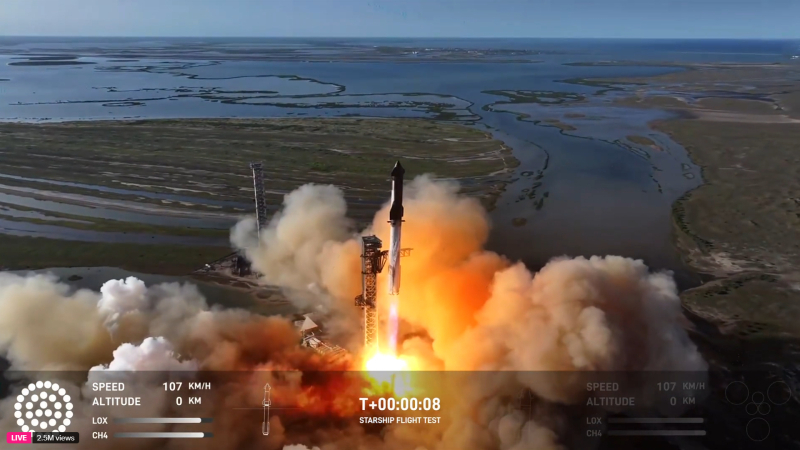SpaceX has explained why, during the last test flight of the Starship rocket, it sank the first stage in the ocean rather than catching it with the launch pad mechanism. It turned out that during the launch on November 20, 2024, a failure occurred on the ground infrastructure, and not on the rocket.

Image source: SpaceX
It turned out that the launch kit tower with the capture mechanism lost contact with the flight control center almost immediately after the separation of the Starship ship from the first stage of Super Heavy during the sixth test flight, as Elon Musk, the head of SpaceX, wrote on the social network X. After this, the command was given to move the accelerator towards the Gulf of Mexico for flooding. It is possible that the stage could have been picked up by the tower in autonomous mode, but the company decided not to risk it.
The capture of the first stage of Super Heavy has already taken place – this happened during the fifth test launch of the ship. The attempt almost ended in an accident, but everything turned out okay. Then, too, the automation almost failed, but already the automation of the stage. After analyzing the situation, the firmware of the first stage equipment was slightly changed, which was going to be checked during the sixth test flight. But this time the equipment of the launch complex failed.
The sixth test flight generally fulfilled its mission – it made it possible to collect valuable data on the dynamics of the Starship’s descent at subsonic speeds during the final stage of the flight before splashdown in the Indian Ocean. This data will help later organize the capture of the Starship itself by the launch complex tower mechanism.
True, before this there will be at least one more, seventh test launch of Starship. This time the ship will be larger and with slightly modified flap placement. If the new version of the device shows a successful splashdown on the same side of the Earth as all previous times, then as part of the eighth flight SpaceX may try to return Starship to the launch pad and catch it in the air. This is expected to happen at the beginning of 2025.